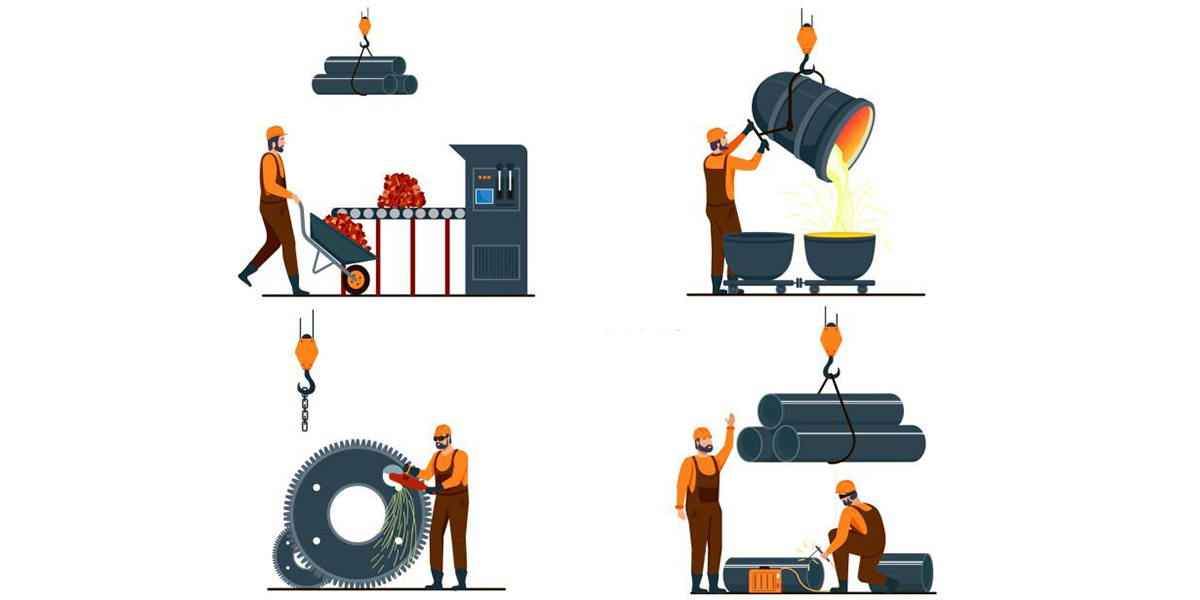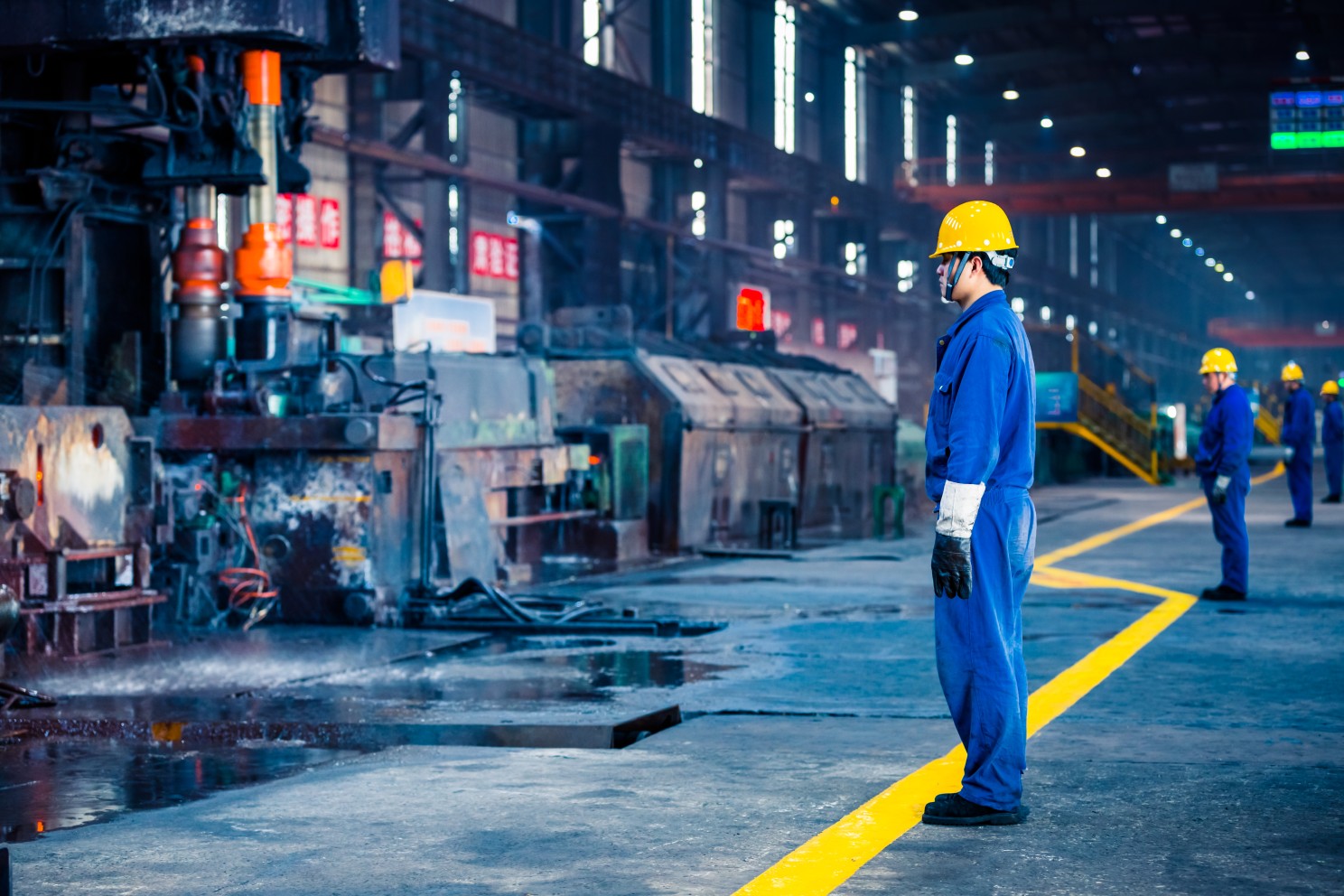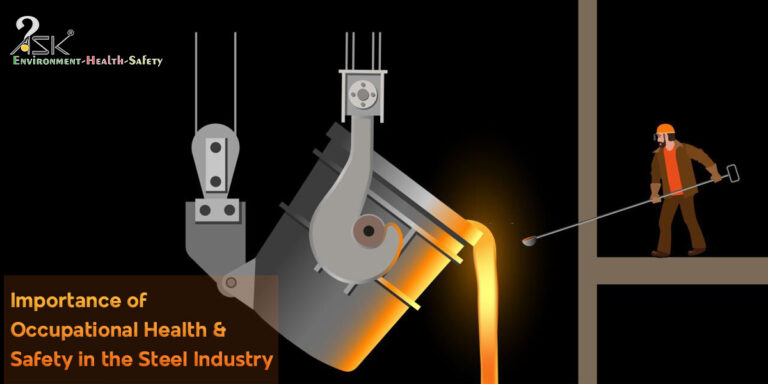The steel industry is classified as industries involving hazardous processes according to the recently implemented Occupational Safety, Health, and Working Conditions Code, 2020. Toxic gases, explosive gases, extreme temperature, fire, electrocution, working at height, and confined space are some of the major hazards in the steel industry. Implementing occupational safety measures in the steel industry has several benefits. Accidents and injuries affect all workers equally and failure to prevent these accidents can lead to loss of life as well as materials. The loss of reputation and customers are also major consequences.
Lessons Learned from ILO Reports on OHS in the Steel Industry
A key lesson from various ILO reports on the steel industry is the importance of assessing workplace safety and health. Occupational accidents and illnesses are among the most common types of work-related injuries and illnesses and are often preventable. However, despite the importance of occupational health and safety, the steel industry is notoriously unsafe, and the ILO report has revealed that workplaces can be dangerous, even fatal.
The ILO reports on the steel industry highlight that in some countries, occupational accidents and diseases are more common than in other industries. The highest rate was recorded in the metal industry.
ILO reports on occupational safety in the steel industry show that while accidents have decreased significantly during the last decade, human error is still the primary cause of most workplace injuries and deaths.
According to Research Article – Accidents and injuries in workers of iron and steel industry in West Bengal, India: Prevalence and associated risk factors, This study estimates the prevalence and risk factors of accidents and injuries among iron and steel industry workers. A cross-sectional study (N = 505) was conducted from November 2019 to March 2020 in the Indian Iron and Steel Company (IISCO), Burnpur, West Bengal, India. The result shows that about 28% of workers experienced accidents and injuries in the last 12 months. The most frequent injuries reported were cuts from sharp objects (37.32%), followed by fractures and dislocation (30.28%) and burns (19.01%), upper head injury (23.24%) and arm/shoulder injury (14.08%). Non-technical education (adjusted odds ratio [AOR]: 2.52), higher exposure in risky and polluted areas (AOR: 2.85), alcohol consumption (AOR: 2.47), poor occupational health and safety knowledge (AOR: 0.65) were significantly associated with work-related injuries.

Investment in OHS
Organizations must survey employees’ perceptions of occupational health and safety standards. They should also invest time and money to boost their health and safety standards through various initiatives such as training, health and safety awareness, employee behaviour studies, workplace inspection, and assessment of environmental factors. Of these, safety awareness is the most important dimension. Managers may use the results to change work culture, attitudes toward performance, and productivity. To achieve zero workplace accidents, workers’ safety must be a top priority.

Importance of Employee Participation in Occupational Safety
Developing a culture of safety in a company is vital to achieving excellence. Safety culture influences employees’ attitudes and behaviours, influencing their commitment and job satisfaction. An employee-driven safety culture leads to a positive safety climate, which ultimately improves safety performance and motivation. Employees are more likely to be motivated to work safely if they feel that their employer values safety.
While employee participation in occupational safety is important for achieving success, it cannot be measured by a universal model. Instead, steel plants use several different methods to assess safety. These include lagging indicators for plant performance and leading measurements for workplace safety. These indicators are process-specific, so plant management may find it difficult to normalize workplace safety performance. Developing a culture of employee participation in safety requires a commitment from all levels of the organization.
Employees should feel valued when they report safety concerns. Organizations must provide the resources necessary for them to participate. Additionally, workers should be rewarded for participating in workplace safety programs. Employees should also feel safe and welcome in open communication with managers. An open-door policy encourages workers to report any problems they discover and address them before they cause harm. Providing feedback on workplace safety programs is important for employee participation.

Health and Safety Committee
Factories with five hundred workers or more; factories carrying on the hazardous process and employing two hundred fifty workers or more; building or other construction work with two hundred fifty workers or more; or mine with one hundred workers or more must have a health and safety committee according to the Occupational Safety, Health, and Working Conditions Code, 2020. These committees must have at least one safety delegate and two workers. Safety delegates are representatives of the employees and appointed by the employer. In addition to their elected roles, they can also take part in training relevant to their activities. Whether the safety delegates are elected or appointed by management, workers must have input and are informed about the company’s health and safety programs.
Conclusion
Incorporating employee involvement in occupational safety is important to a steel organization’s culture. A socially responsible steel company aims to exceed statutory standards while working towards successful plant safety and environmental performance. The strategy is crucial to achieving sustainable operations. An accident-free work environment is essential for the health and well-being of the employees. Get in touch with us to know how we deliver safety practices in various industries.



